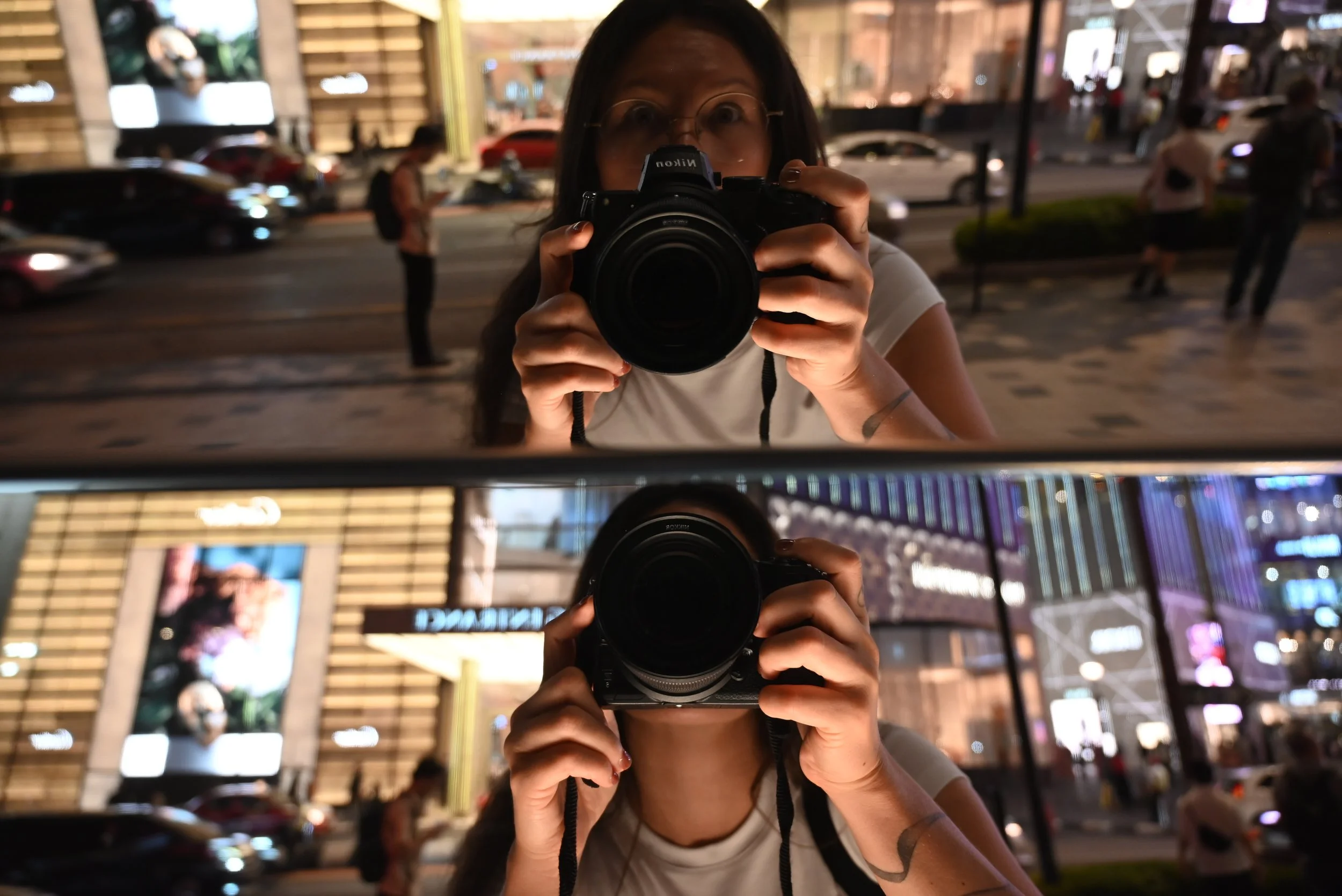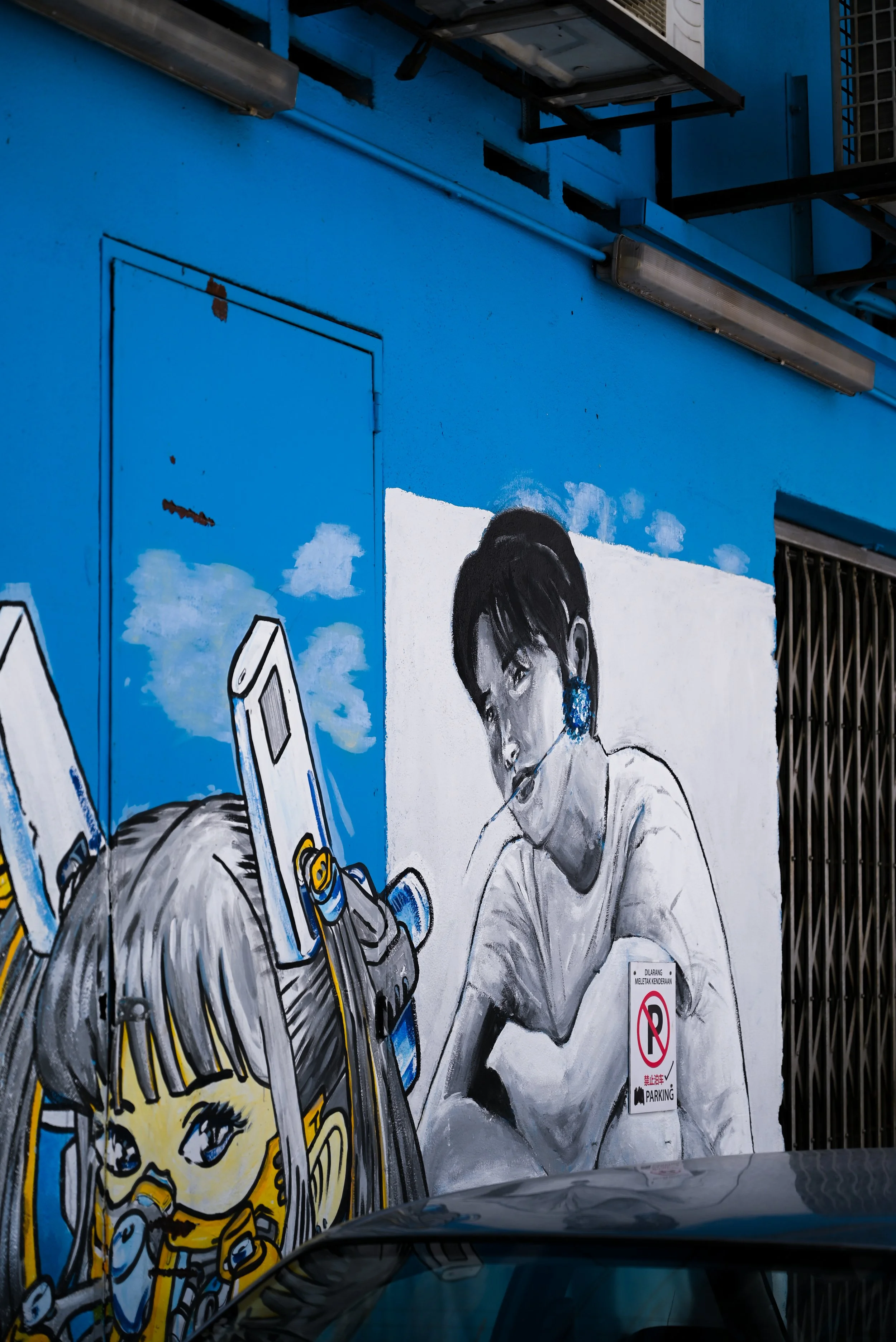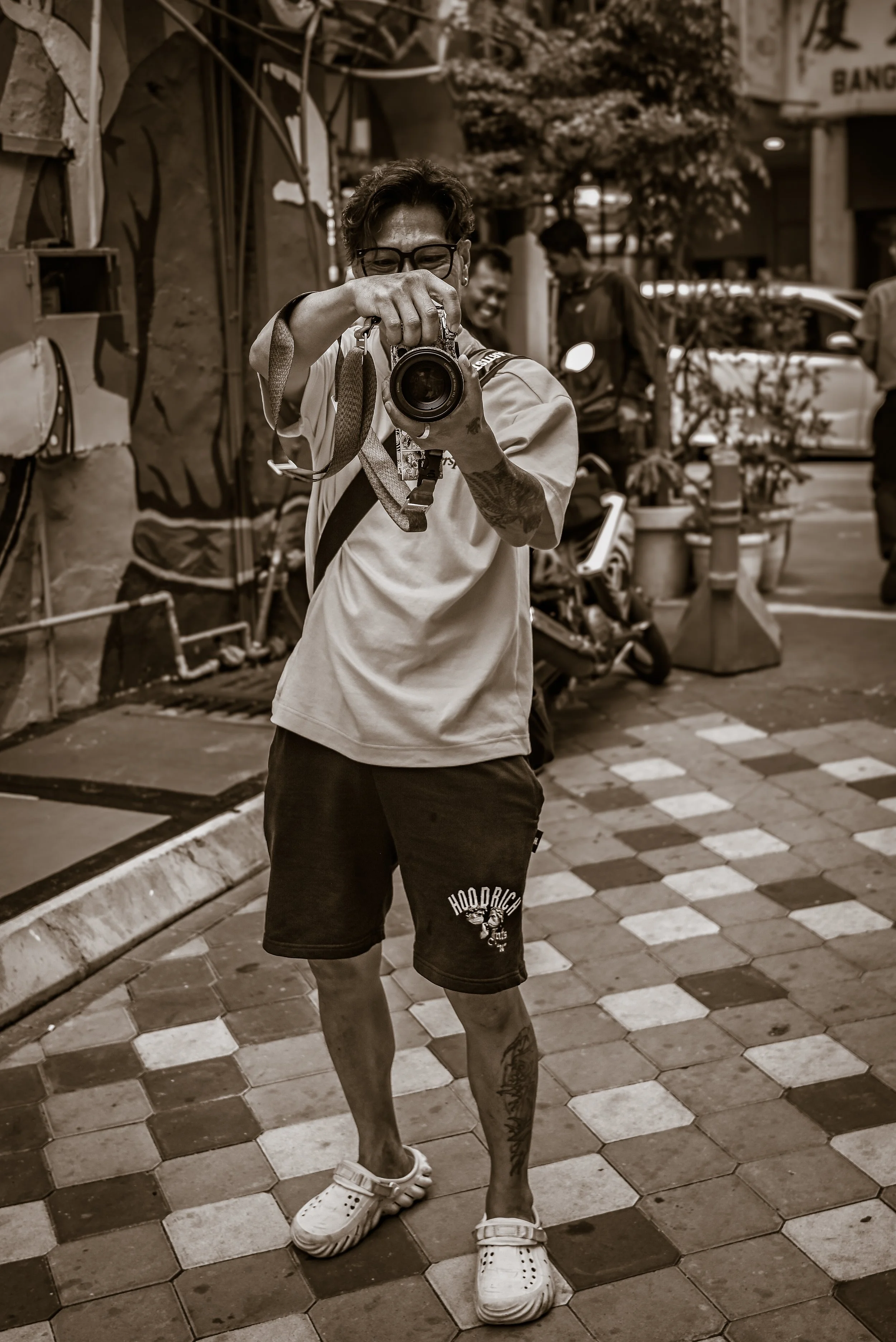Through the Streets of Kuala Lumpur: A Photographer’s Glimpse
“Places matter. They are what make us, and in turn we shape them.”
Kuala Lumpur doesn’t show itself all at once. It arrives in fragments, in details you only catch when you pause and take them in together.
Rows of golden buns behind a bakery window caught my eye. Bread may seem ordinary, yet it carries centuries of movement: stories of colonial influence, migration, and the way communities fold foreign tastes into their own.
At Pasar Karat, a mural reminded me that flea markets are not just places of exchange but archives of memory. Every chipped plate, every faded book, carries a past life. Each scratch and stain is part of its story.
On a street corner, another photographer raised his camera at the same moment I lifted mine. For a breath we reflected one another, both witnesses, both seen. That is what photography feels like here. It does not only capture; it responds. It becomes a dialogue.
The city moved with its own rhythm. Motorbikes cut through narrow lanes, neon lights flickered awake, traffic flowed in a tempo that felt both chaotic and precise. In the reflections along Bukit Bintang, I remember that travel never lets us step outside the frame. We bring ourselves into every picture, every story.
Above me, workers restored colonial facades. Their labor was quiet, almost invisible, yet vital to keeping the city alive. Nearby, a tour guide lifted his flag and began to lead a group, deciding which corners of Kuala Lumpur would be remembered and which might slip away.
Even the skyline seemed to carry a lesson. Men in a cherry picker stretched toward white arches set against a brilliant sky. Old architecture and new machinery pressed together, both insisting on movement. On the walls below, murals blazed with rebellion and identity, voices made permanent in color.
These are fragments, glimpses of a larger whole: food, labor, art, the pulse of daily life. Next week I will share the full story, a closer look at what Kuala Lumpur revealed to me about memory, change, and how cities hold onto themselves even while they transform.
For now, this is how I saw it—one day, one walk, one set of eyes.
Shan












